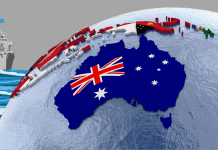As India and China start disengaging their troops from the contested border in Eastern Ladakh, how will New Delhi position itself in the US-led anti-China bloc, QUAD?
Why Russia’s Upgraded Ka-52M ‘Alligator’ Attack Helicopter Could Be More Lethal Than US’ Apache?
The US and Japan, which is also part of the Quadrilateral Security Dialogue or QUAD, continue to remain concerned about the Chinese aggression in the Asia-Pacific region.
US Department of States’ spokesperson Ned Price said US Secretary of State Antony J Blinken and Japanese Foreign Minister Toshimitsu Motegi during a call on February 10 expressed concern over increased Chinese assertiveness around the Senkaku Islands in the East China Sea following China’s enactment of a new coast guard law
As a follow-up action, the QUAD members — the US, Japan, Australia, and India — are working to arrange the first meeting of their leaders, the Japan Times reported last week. It says Washington has already proposed to other countries the idea of holding an online meeting of the QUAD leaders.
The report highlights that whether talks will materialize or not depends on India, due to its relatively cautious stance on the framework and “is the only Quad member that shares a land border with China and operates outside of US-led security alliances”.
On Wednesday, the Chinese defense ministry announced that: “The Chinese and Indian frontline troops at the southern and northern bank of the Pangong Tso Lake start synchronized and organized disengagement from February 10.”
Indian defense minister Rajnath Singh reiterated in Parliament on Thursday that both sides want to maintain peace and tranquility along the border. Since India and China are unlocking the nine-month stand-off, experts have flagged that it will be seen under what terms India would manage peace with China in eastern Ladakh and restore the status quo across a large frontage.
Abhijnan Rej, Director of Research at Diplomat Risk Intelligence, writes in The Diplomat: “If a solution to the Ladakh dispute is indeed in sight, one can only wonder what (if any) diplomatic concessions are to be made to China in order to secure it, including the extent to which India will visibly brandish its membership in counter-China groupings such as the Quad.”
Successful meeting with Quad counterparts from Japan, Australia, and India in Tokyo. Thanks to Foreign Minister @moteging for his leadership in facilitating our productive discussion. The Quad shares a vision for peace, security, and prosperity in a free and open Indo-Pacific. pic.twitter.com/b8iJm4BcJv
— Secretary Pompeo (@SecPompeo) October 6, 2020
Meanwhile, US President Joe Biden is keen on further strengthening QUAD. According to the Japanese Foreign Ministry, Biden and Prime Minister Yoshihide Suga agreed during a recent telephone talk that they would promote the QUAD grouping.
Satoshi Suzuki, Japan’s Ambassador to India, told ThePrint that India and Japan are collaborating in key projects in Bangladesh, Sri Lanka, and Myanmar to strengthen the QUAD. Suzuki, who has to lead the QUAD Senior Officials’ Meetings for two years from 2017, has said:
“India and Japan have also collaborated in other countries like Sri Lanka, Bangladesh, Myanmar, and the Maldives in order to strengthen the QUAD under the Indo-Pacific framework.”
India’s attitude towards the QUAD has changed immensely over the period of time but it hasn’t openly made comments on China’s aggressiveness. The recent evidence of India’s hesitance over QUAD was visible when US President Joe Biden had a talk with Indian Prime Minister Narendra Modi.
While Biden’s readout from the call states that leaders agreed over a stronger regional architecture through the Quad, the corresponding readout from the Indian side did not see the QUAD being named.
Follow EurAsian Times on Google




